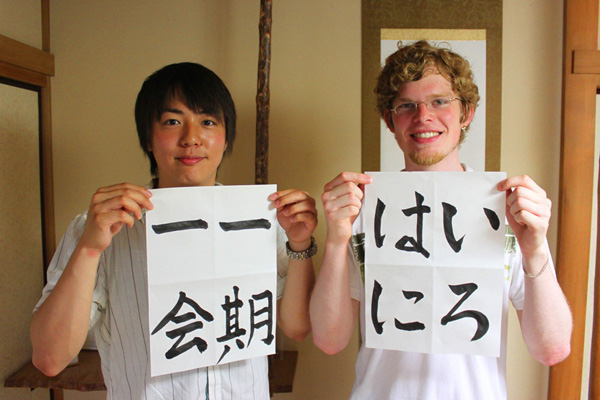An attempt at calligraphy by Joshua Friesen
- Published 2010.7.13
A few days ago I was able to visit a calligraphy studio (Norihito Calligraphy Studio) with a couple of friends from work. It was the first time since I have touched a calligraphy pen in over three years, so I was slightly nervous as to what kind of work I would be able to produce, but it turned out better than I expected.
The place where we went to was located in Shibuya, one of TokyoŌĆÖs busiest areas, and only a fifteen minute train ride away from Kichijoji where I currently live. On the day that we went, the humidity was rather high, so the fifteen minute walk to the studio from Shibuya station unfortunately left me quite drenched by the time I arrived. The chilled green tea that was served at the studio never tasted so good!
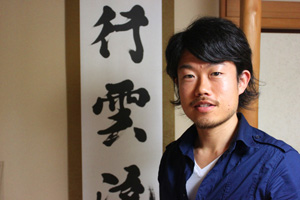
He is instructor Norihito Ishikawa.
As soon as I sat down, I was handed a blank sheet of calligraphy paper, a brush and ink. While I have had some experience with calligraphy before, it was merely a class taken during my first exchange program to Japan in high school, and needless to say, I soon found out how rusty my skills had become. To break down the process in which the instructor told us to write, it began with pouring the ink into the ink pad and applying it to the brush, making sure that the tip of the brush is about eighty percent soaked with ink. The blank page is folded into four quarters, one character for each section. Each page can therefore hold four characters.
My friend was to write out the Japanese idiom, ŌĆ£once in a lifetime,ŌĆØ ŃĆīõĖĆ µ£¤ õĖĆ õ╝ÜŃĆŹ.
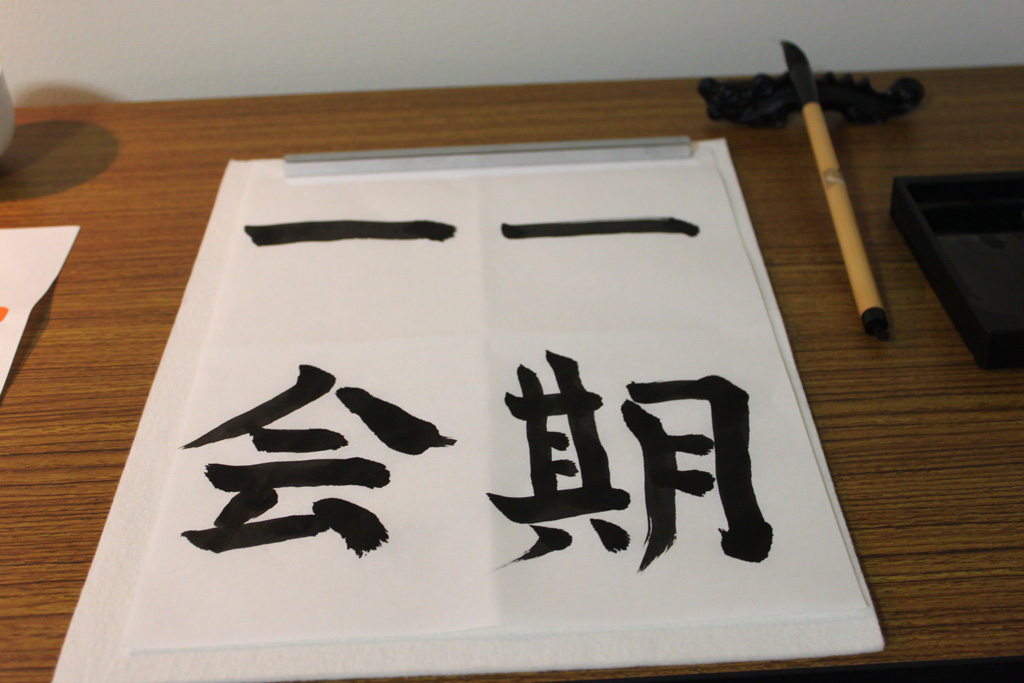
As can be expected, my Japanese friend made it look simpleŌĆ”
I had it a bit easier, as my job was to practice writing out the traditional ordering of Japanese syllables, ŃĆīŃüä ŃéŹ Ńü» Ńü½ŃĆŹ.
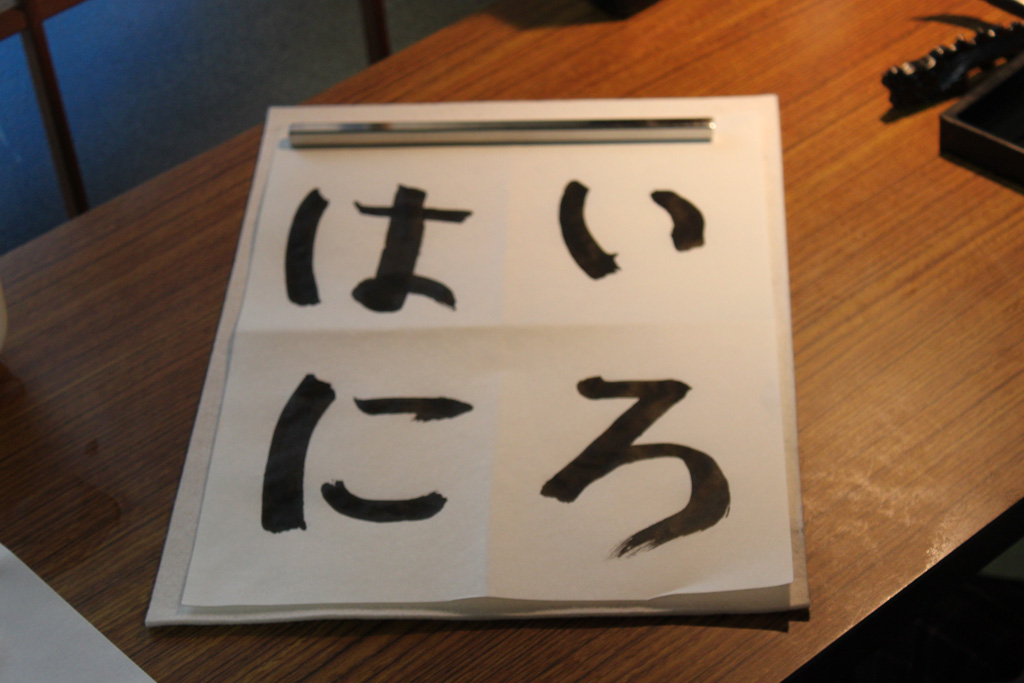
Clearly lacking the artistic touch
We spent the next hour or so getting our written works checked by the instructor who wrote overtop in orange to correct our mistakes. He explained how important the symmetry of each character is, and how following certain basic rules will generally improve the overall writing.
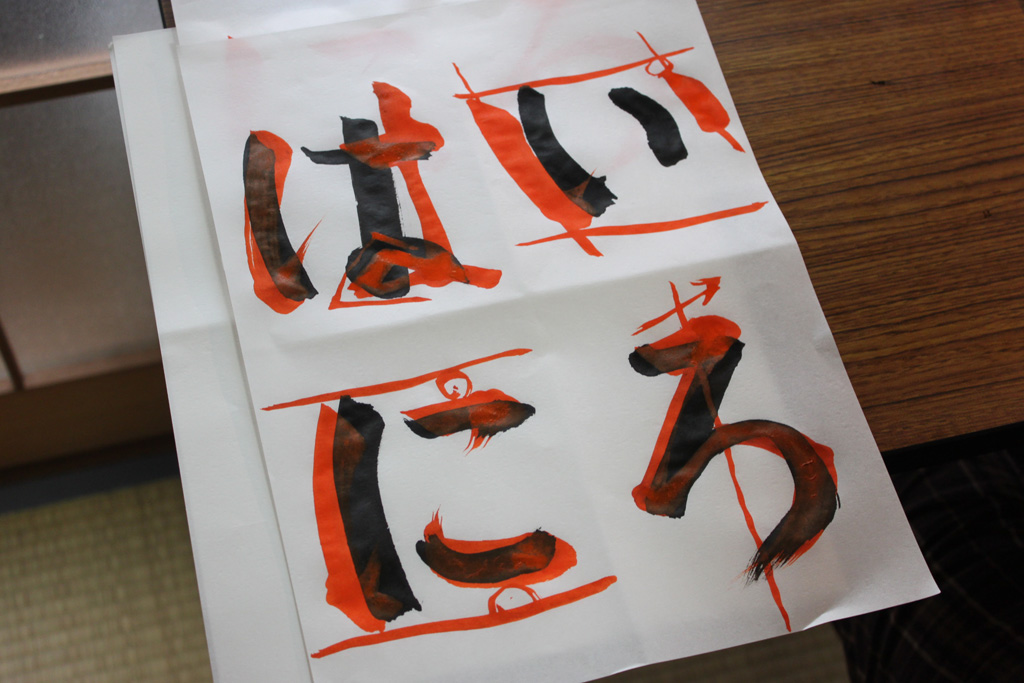
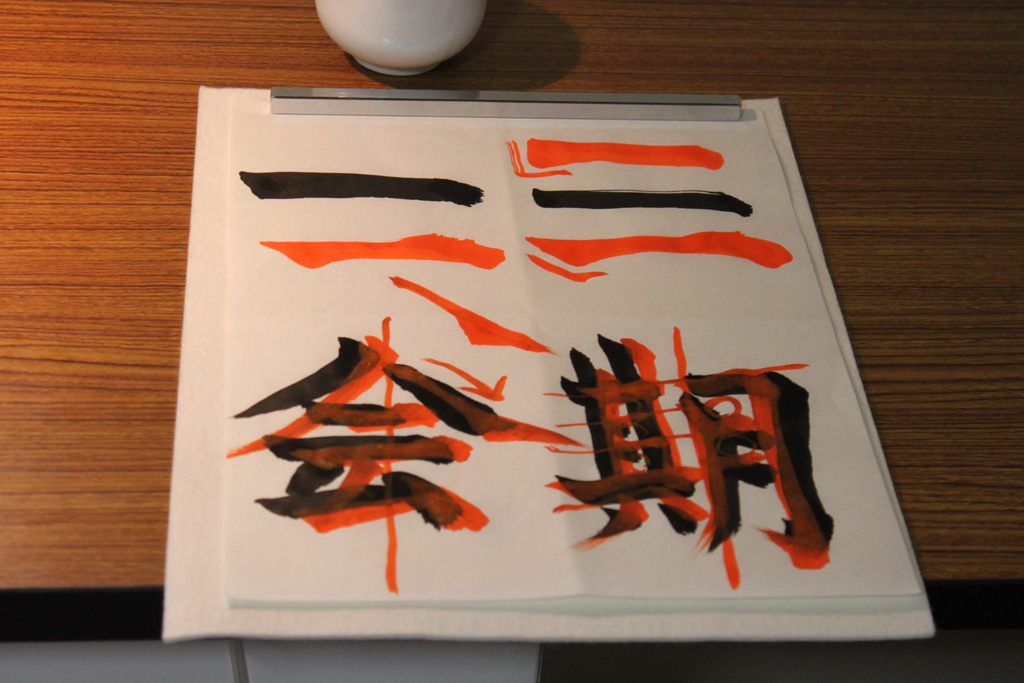
Each character has its symmetry which needs to be followed correctly.
After four or five goes at it, and much explaining by the instructor, we both managed to complete a satisfactory piece of writing. In such a short time even I was able to write something I could be pleased with.
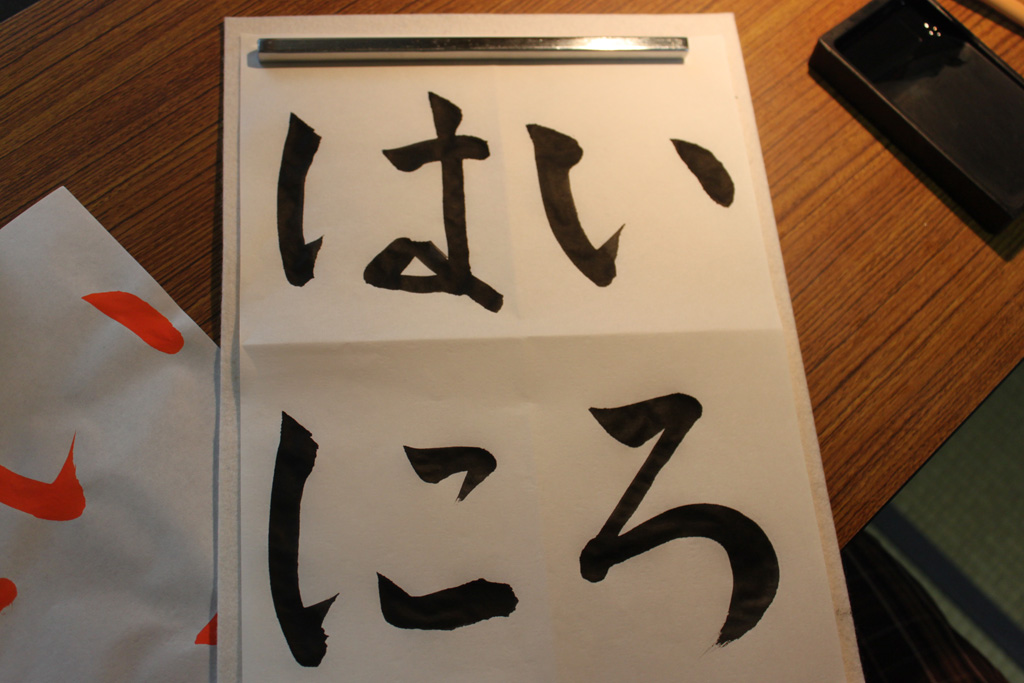
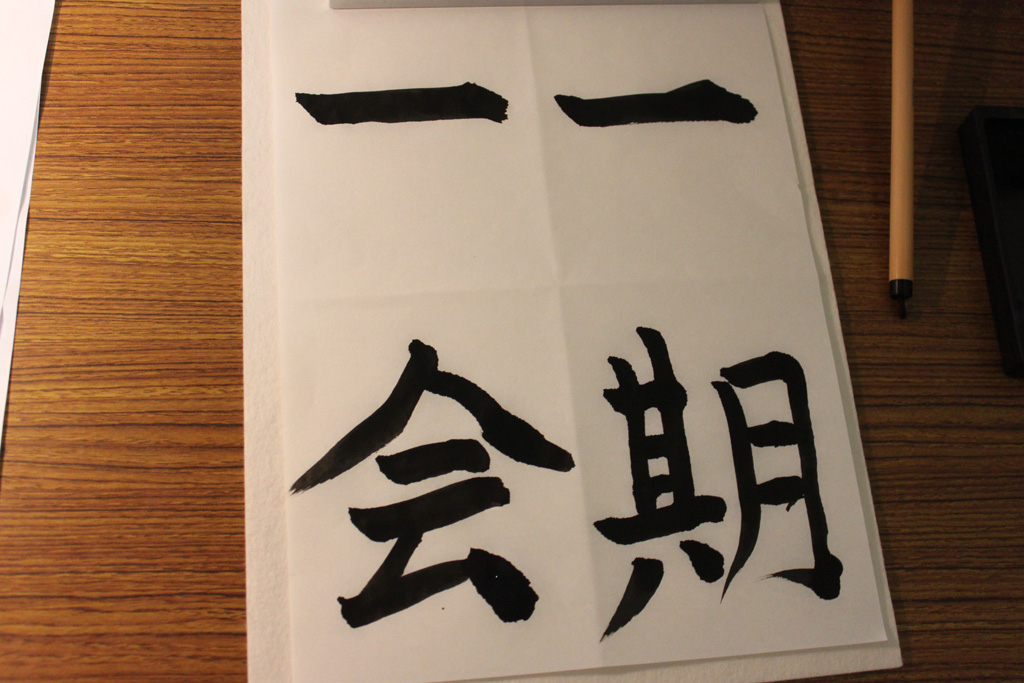
Not too bad for a beginner, if I do say so myself.
The overall experience of the calligraphy lesson was quite interesting. It gave me a chance to touch on a part of Japanese culture, as well as produce something artistic. I would recommend calligraphy lessons to anyone who wants to learn some traditional Japanese culture and try their hand at creating something unique to themselves.
